Discover 15 hidden attractions, cool sights, and unusual things to do in Cuzco (Peru). Don't miss out on these must-see attractions: Sacsayhuamán, Convent of Santo Domingo, and Coricancha. Also, be sure to include Tambomachay in your itinerary.
Below, you can find the list of the most amazing places you should visit in Cuzco (Cusco).
Table of Contents
Sacsayhuamán
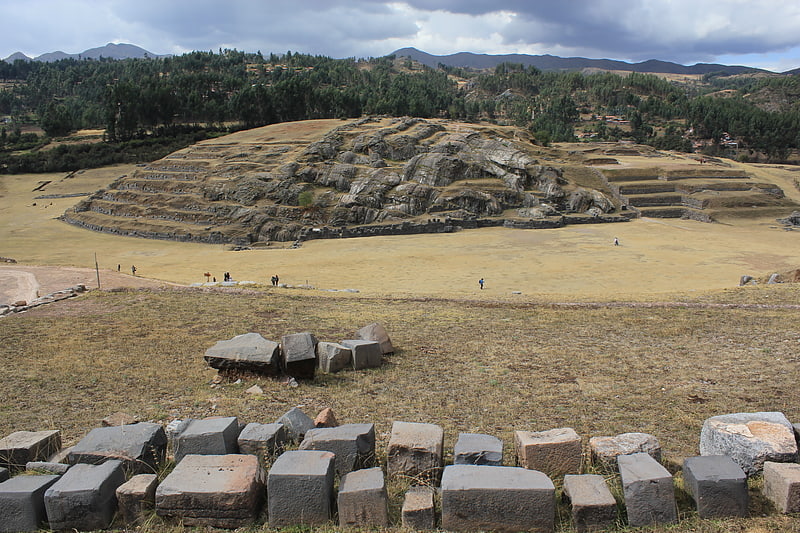
Inca complex known for its stone walls. Sacsayhuamán, which can be spelled many different ways, is a citadel on the northern outskirts of the city of Cusco, Peru, the historic capital of the Inca Empire.
The complex was built by the Inca in the 15th century, particularly under Pachacuti and successors. They built dry stone walls constructed of huge stones. The workers carefully cut the boulders to fit them together tightly without mortar. The site is at an altitude of 3,701 m (12,142 ft).
In 1983, Cusco and Sacsayhuamán together were designated as sites on the UNESCO World Heritage List, for international recognition and protection.[1]
Address: Ciudad del Cusco, Cuzco
Convent of Santo Domingo
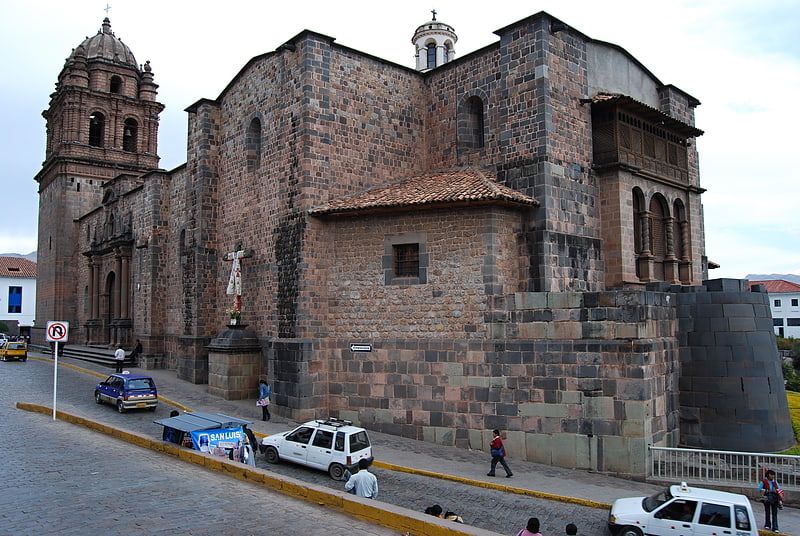
Catholic church in Cusco, Peru. The Convent of Santo Domingo is a convent of the Dominican Order in the city of Cusco, Peru. Spanish colonists built it on top of Coricancha, the most important Inca temple of the capital of the people's empire.[2]
Coricancha
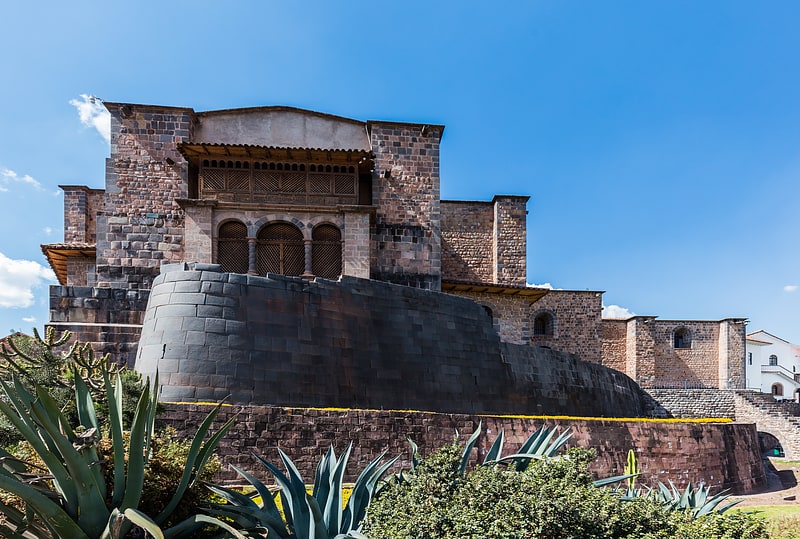
Ruins of an important Inca temple. Coricancha, Koricancha, Qoricancha or Qorikancha was the most important temple in the Inca Empire. It is located in Cusco, Peru, which was the capital of the empire.[3]
Address: Plazoleta de Santo Domingo, Cuzco
Tambomachay
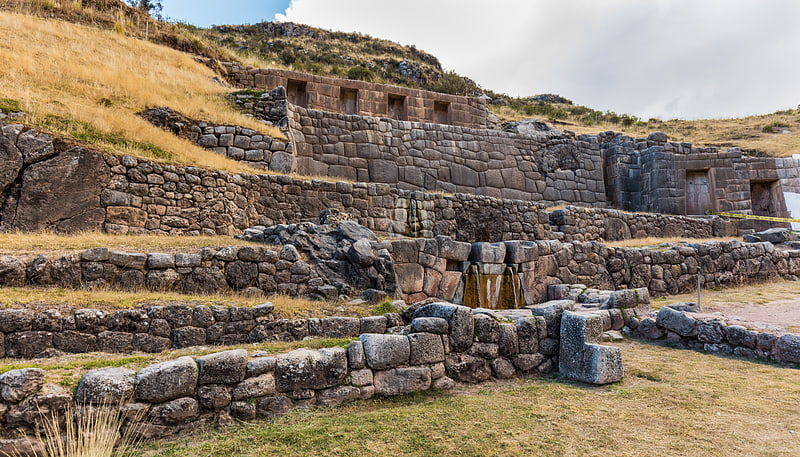
Archaeological site in Peru. Tambomachay is an archaeological site associated with the Inca Empire, located near Cusco, Peru. An alternate Spanish name is El Baño del Inca.
It consists of a series of aqueducts, canals and waterfalls that run through the terraced rocks. It is situated near springs such as the one called Timpuc Puquiu, a boiling spring on the northern bank of the Timpuc River and the spring near Huaylla Cocha community. These natural springs were channeled through three waterfalls that still flow today.
The function of the site is uncertain: it may have served as a military outpost guarding the approaches to Cusco, as a spa resort for the Incan political elite or imperial baths. It could have also served a religious function since sacred water fountains were found almost all of major Incan temple such as Pisac, Ollantaytambo, and Machu Picchu. There are sources that refer to Tambomachay as one of the nine ceques built along the Road of Antisuyu, describing it as an Incan house where sacrifices were also made.[4]
Qenko
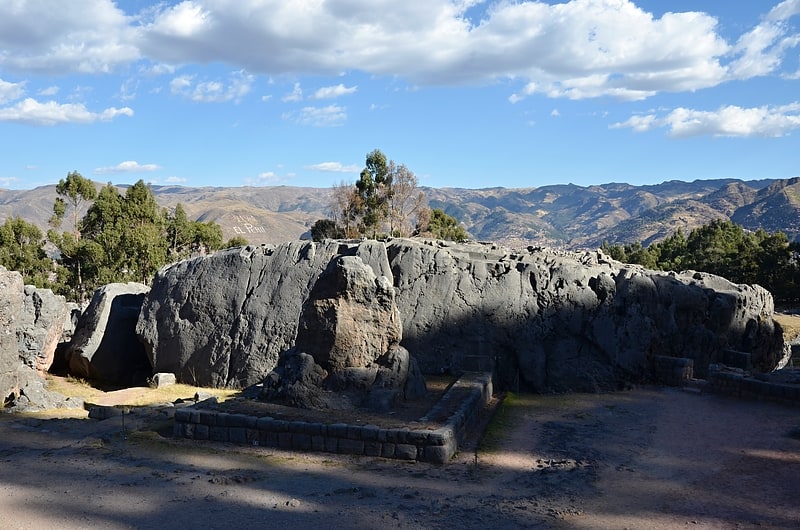
Also known as: Kenko
Ruins of an ancient Incan temple. Q'enqo, Qenko, Kenko, or Quenco is an archaeological site in the Sacred Valley of Peru located in the Cusco Region, Cusco Province, Cusco District, about 6 km north east of Cusco. The site was declared a Cultural Heritage of the Cusco Region by the National Institute of Culture.
It is one of the largest huacas (holy places) in the Cusco Region. Many huacas were based on naturally occurring rock formations. It was believed to be a place where sacrifices and mummification took place.[5]
Templo de la Sagrada Familia

The Templo de la Sagrada Familia also called Templo de Jesús, María y José, is a Renaissance church located in the city of Cusco, Cusco Region, Peru. This building was designed by Francisco Becerra.[6]
Puka Pukara
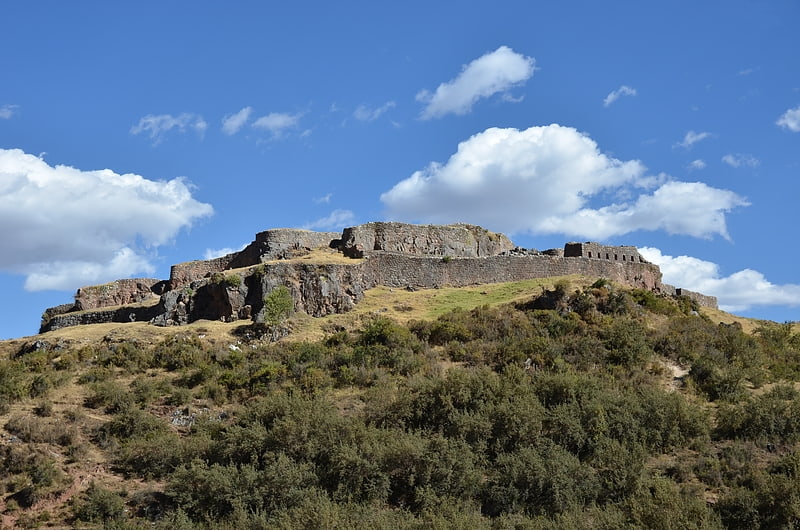
Also known as: Puca Pucara
Historic military ruins with a scenic view. Puka Pukara is a site of military ruins in Peru situated in the Cusco Region, Cusco Province, Cusco District, near Cusco. This fort is made of large walls, terraces, and staircases and was part of defense of Cusco in particular and the Inca Empire in general.
The name probably comes from the red color of the rocks at dusk. Puka Pukara is an example of military architecture that also functioned as an administrative center.[7]
Basilica of La Merced

The Basilica of La Merced, also known as Convent of La Merced, is a minor basilica located in the city of Cusco, Peru. It is located 100 meters southwest of the Plaza de Armas in front of the Plazoleta Espinar. It belongs to the Order of the Blessed Virgin Mary of Mercy and has, annexes, both the convent and the premises of La Merced College. The church has a three-nave basilica plan covered with brick vaults and dome on the crossing, with Baroque altars on its lateral naves and Neoclassical style on the main altar. It also has a tower with Baroque bell tower topped with a semicircular dome. Highlights its portal-side reredos and the Renaissance portal of the muro de pies, the choir stalls, its colonial paintings and polychrome wood carvings. Inside rest the remains of Diego de Almagro, Diego de Almagro II and Gonzalo Pizarro.
Since 1972 the property is part of the monumental area of Cusco declared as a Historic Monument of Peru. Also being part of the historic center of the city of Cusco, it is part of the area declared a World Heritage Site by UNESCO in 1983.[8]
Address: Mantas 121, 08000 Cusco
Estadio Garcilaso
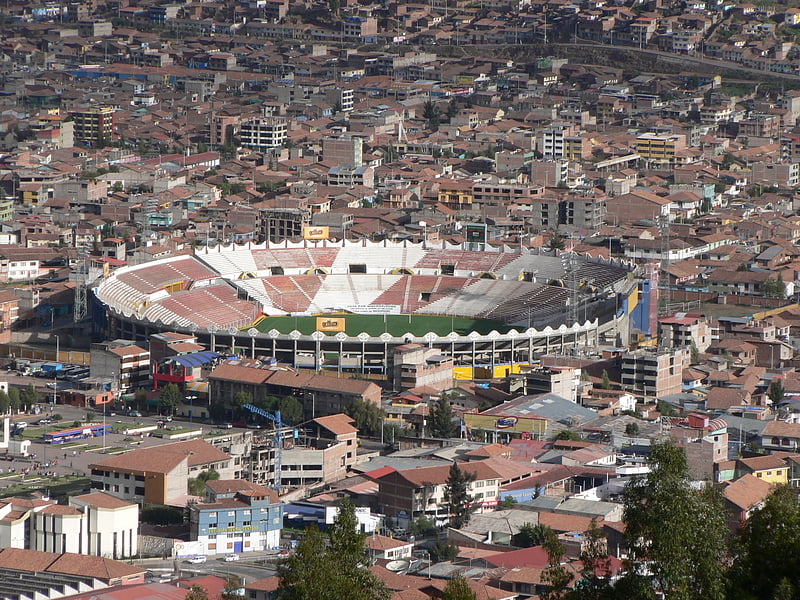
Also known as: Estadio Inca Garcilaso de la Vega
Stadium in Cusco, Peru. Estadio Inca Garcilaso de la Vega, commonly known as Estadio Garcilaso, is Cusco's principal stadium and the home venue of the local football team Cienciano. The stadium was named after the Peruvian mestizo Inca Garcilaso de la Vega and inaugurated in 1958, with an initial capacity of 30,000. It is owned by the Instituto Peruano del Deporte.
The increase in spectator capacity came after CONMEBOL chose Peru to host the Copa América 2004, prompting the Peruvian government to invest in a five-million dollar renovation program for its stadia, including the Estadio Garcilaso de la Vega. Its renovation cost approximately $1,720,000, which helped boost its official spectator capacity to 42,056. The stadium ended up hosting the third place game of the Copa América 2004. Thanks to the event, the city of Cusco received even more tourists than it already receives as Peru's top tourist destination.
The Estadio Garcilaso de la Vega is also recognized as one of the most beautiful stadiums in all of South America. This recognition is due to its well-maintained grass and its resistance to the sometimes aggressive and highly variable climate of the city of Cuzco. The awe is the stadium's perpetual beauty even after these climates. It is this resistive beauty that inspires soccer commentators and visitors alike.
The stadium is currently home to three football clubs. The first two original clubs since the 1950s are Cienciano of the Peruvian Primera Division and Deportivo Garcilaso of the Copa Perú, and the third is Cusco FC, also of the Peruvian Primera División.[9]
Cathedral Basilica of Our Lady of the Assumption

Also known as: Catedral del Cuzco
Ornate cathedral with many paintings. The Cathedral Basilica of the Assumption of the Virgin is the main church of the Roman Catholic Archdiocese of Cusco. The cathedral is located on the Plaza de Armas. The entire building was built between 1560-1654,
Adjacent and joined to the cathedral is the smaller Iglesia del Triunfo, the first Christian church to be built in Cusco. The Iglesia de la Compania de Jesus, also on the Plaza de Armas, was built at a similar time as the cathedral.
The Cathedral, in addition to its official status as a place of worship, has become a major repository of Cusco's colonial art. It also holds many archeological artifacts and relics. The cathedral was designated a UNESCO World Heritage Site under the City of Cuzco listing in 1983.[10]
Church of the Society of Jesus
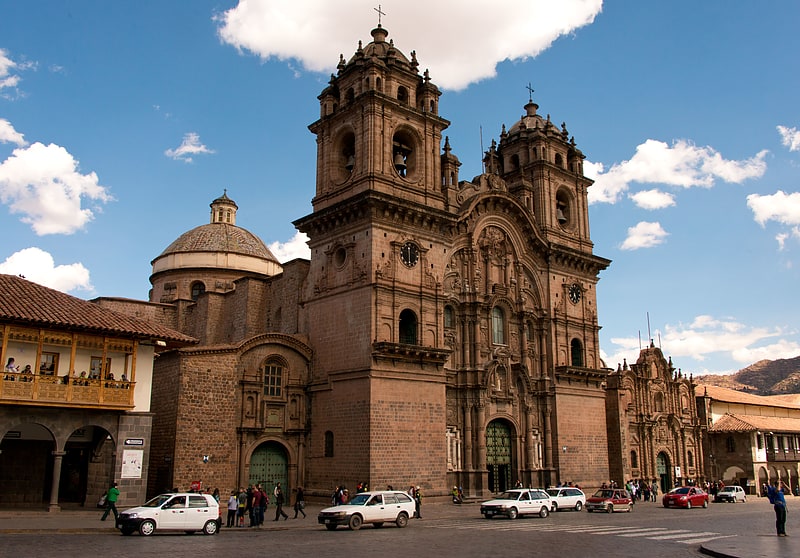
Also known as: Iglesia de la Compañía
Church. The Iglesia de la Compañía de Jesús is a historic Jesuit church in Cusco, the ancient capital of the Inca Empire, in Cusco Region, Peru. It is situated in the Plaza de Armas de Cusco, the city center. It is built on an Inca palace. It is one of the best examples of Spanish Baroque architecture in Peru. The architecture of this building exerted a great influence on the development of many Baroque architecture in the South Andes. Its construction began in 1576, but it was badly damaged in an earthquake in 1650. The rebuilt church was completed in 1668.[11]
Address: Plaza de Armas del Cusco, 08002 Cusco
Museo de Arte Precolombino
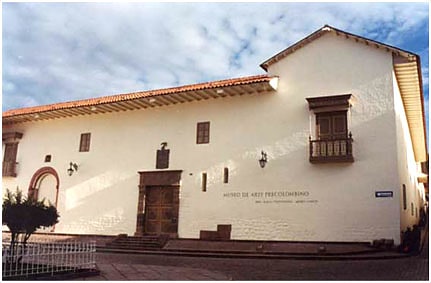
Museum in Cusco, Peru. The Pre-Columbian Art Museum is an art museum in Cusco, Peru, dedicated to the display of archaeological artifacts and examples of pre-Columbian artworks drawn from all regions of pre-Columbian Peru. The museum is situated on Plazoleta de las Nazarenas in Cusco's San Blas district, and has on permanent display exhibitions of some 450 individual representative artifacts that are drawn from the wider collection of its parent museum, the Larco Museum in the Peruvian capital Lima.[12]
Address: Plazoleta Nazarenas 231, 08000 Cusco
Twelve angle stone
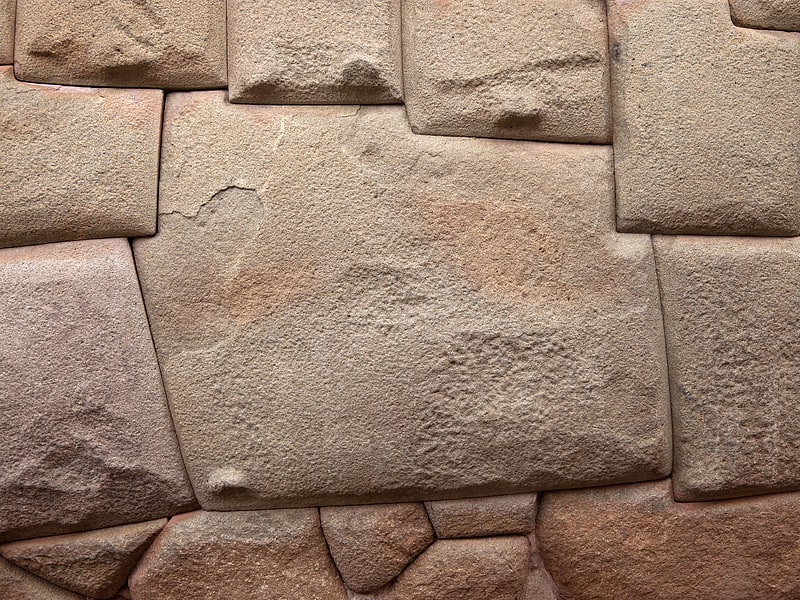
Also known as: Piedra de los doce ángulos
Tourist attraction in Cusco, Peru. The twelve-angled stone is an archeological artefact in Cuzco, Peru. It was part of a stone wall of an Inca palace, and is considered to be a national heritage object. The stone is currently part of a wall of the palace of the Archbishop of Cuzco.[13]
Colcampata
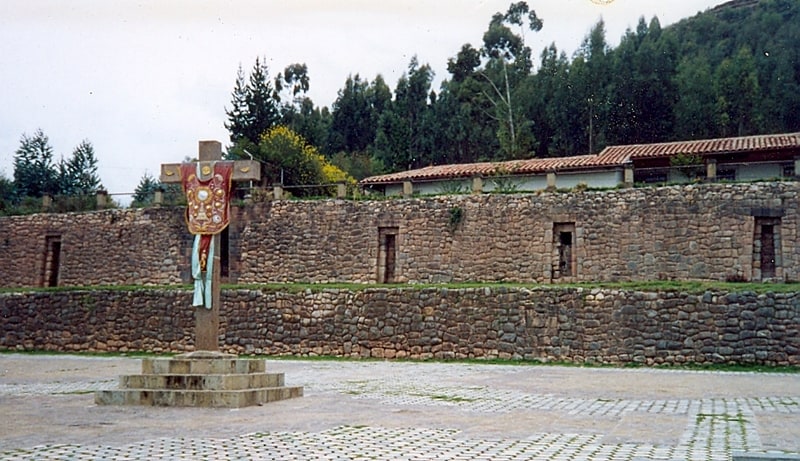
Archaeological site in Cusco, Peru. Colcampata is an archaeological site in Peru. It is situated in the Cusco Region, Cusco Province, Cusco District.
The site was declared a National Cultural Heritage of Peru by R.D N°1128-2004-INC.[14]
Museo Inka
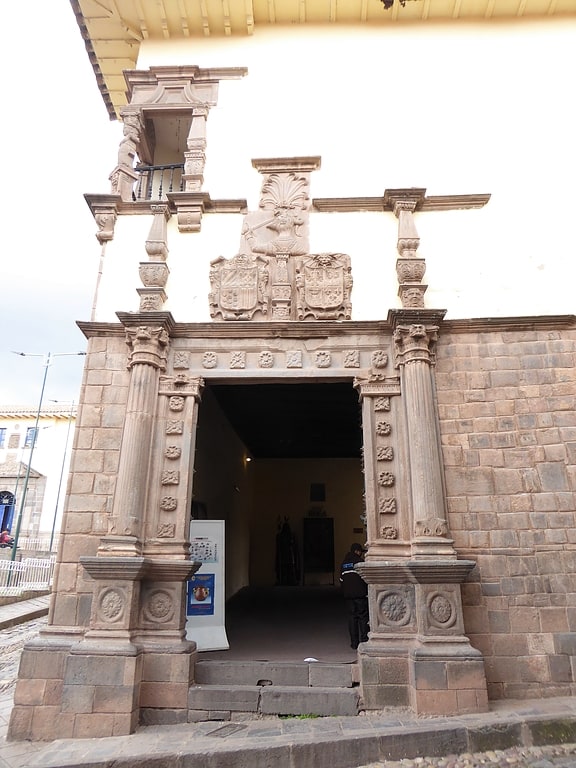
The Inka Museum is a university museum located in the city of Cusco, Peru. It was formerly known as the Museum of Archaeology.
It is located in the colonial mansion Casa del Almirante. The place was the house of Huáscar during the Inca period. It was built by Admiral Francisco Alderete Maldonado at the beginning of the XVII century. Then it was occupied by the archbishopric, the palace of the last viceroy and the Government House of Marshal Santa Cruz. The mansion was damaged by the earthquake of 1950.
The museum has a collection of keros, textiles, mummies, tools, weapons and jewelry. It covers in chronological form the history of Cusco from its beginnings until the XX century. The property of the museum is in charge of the National University San Antonio Abad of Cusco.
Address: Cuesta del Almirante s/n, Cuzco